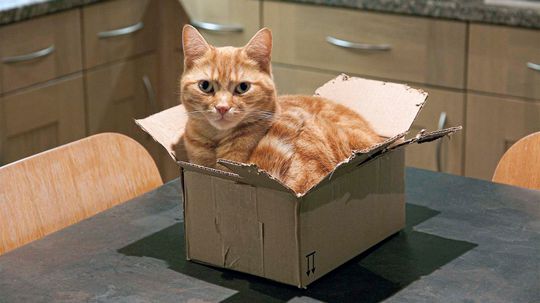Delving into the enigmatic world of feline behavior, we uncover the captivating science behind cats’ irresistible urge to sit in squares. Prepare to embark on a journey that will unravel the secrets hidden within their seemingly simple yet intriguing actions.
The Curious Connection Between Cats and Squares
Intriguingly, cats have an uncanny ability to find solace within geometric shapes, particularly squares. This phenomenon has sparked curiosity among researchers worldwide, prompting them to delve deeper into understanding this peculiar behavior.
Studies suggest that this affinity for squares may stem from cats’ instinctual need for security and comfort. The defined boundaries provided by these shapes create a sense of enclosure, offering a safe haven where they can relax without fear or vulnerability.
Furthermore, it is believed that sitting in squares allows cats to regulate their body temperature more efficiently. By curling up in compact spaces with minimal exposed surface area, they conserve heat during colder periods while staying cool amidst warmer climates.
This idiosyncratic preference for squares showcases the intricate balance between feline instincts and environmental adaptation—a testament to nature’s remarkable design.
An Evolutionary Quirk: Unveiling Ancient Origins
To truly comprehend why our beloved feline companions gravitate towards squares today, we must trace back their evolutionary roots. It is widely speculated that wild ancestors sought refuge within rock crevices or dense foliage—natural equivalents of modern-day square-shaped havens.
This primal inclination towards enclosed spaces allowed ancient felids to remain concealed from predators while maintaining optimal vigilance over potential prey. Over time, as domestication took hold and environments transformed drastically, this innate attraction persisted despite its diminishing practicality.
Thus, the age-old connection between cats and squares serves as a fascinating reminder of their ancestral heritage—a testament to their resilience and adaptability throughout centuries of evolution.
The Mind-Boggling Mystery: Decoding Feline Psychology
Beyond the physical aspects, the allure of squares for our feline friends delves into the realm of psychology. Cats possess an innate curiosity that drives them to explore new territories while ensuring they remain within familiar boundaries.
Squares offer a perfect blend of novelty and security—an enticing combination that appeals to their inquisitive nature. By sitting in squares, cats can satisfy their desire for exploration without straying too far from their comfort zones.
This behavior also highlights cats’ need for control over their surroundings. Squares provide a sense of ownership—a designated space exclusively reserved for them—allowing them to assert dominance within their chosen territory.
Intriguingly, this psychological aspect further reinforces the notion that our feline companions are not merely pets but rather complex beings with intricate emotional needs and desires.
A Captivating Conclusion: The Enigma Persists
As we conclude our journey through the captivating world where cats meet squares, one thing becomes abundantly clear—the allure remains shrouded in mystery despite scientific advancements. While theories abound regarding evolutionary instincts and psychological motivations, there is still much left unexplained.
Perhaps it is precisely this enigmatic fascination that continues to captivate us—reminding us that even amidst domestication, these majestic creatures retain an air of mystique beyond human comprehension. So next time you spot your furry companion nestled comfortably within a square-shaped object, take a moment to appreciate the profound beauty hidden within this seemingly simple act—it’s truly something special!
